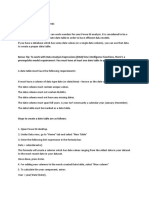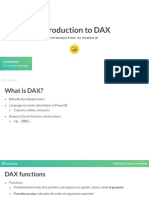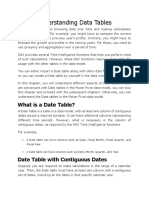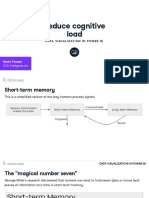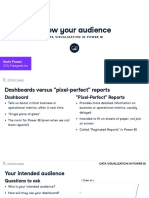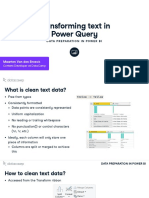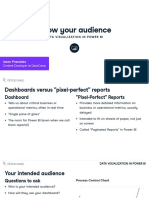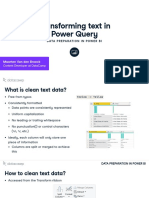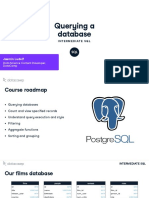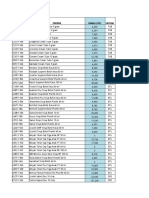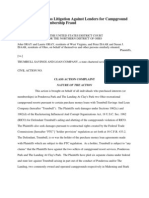0% found this document useful (0 votes)
93 views16 pagesPower BI Date Table Guide
This document provides an introduction to working with dates in DAX and Power BI. It discusses date and time functions, creating a dedicated date table for accurate time-based reporting and analysis, and using calendar functions like CALENDAR() and CALENDARAUTO() to generate a date table. Creating a date table allows filtering by multiple date attributes, custom calendar views, and effective use of time intelligence features. Common types of time-series analysis like revenue by day of week and fiscal performance are also mentioned.
Uploaded by
Komi David ABOTSITSECopyright
© © All Rights Reserved
We take content rights seriously. If you suspect this is your content, claim it here.
Available Formats
Download as PDF, TXT or read online on Scribd
0% found this document useful (0 votes)
93 views16 pagesPower BI Date Table Guide
This document provides an introduction to working with dates in DAX and Power BI. It discusses date and time functions, creating a dedicated date table for accurate time-based reporting and analysis, and using calendar functions like CALENDAR() and CALENDARAUTO() to generate a date table. Creating a date table allows filtering by multiple date attributes, custom calendar views, and effective use of time intelligence features. Common types of time-series analysis like revenue by day of week and fiscal performance are also mentioned.
Uploaded by
Komi David ABOTSITSECopyright
© © All Rights Reserved
We take content rights seriously. If you suspect this is your content, claim it here.
Available Formats
Download as PDF, TXT or read online on Scribd
/ 16


